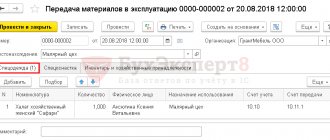What is the procedure for calculating salaries step by step? For beginners, this information is of great importance. Typically, accounting records and accruals are made in a special 1C accounting program. It records all operations of the enterprise. This article will discuss how to process and calculate salaries. A step-by-step algorithm for all necessary accounting operations will be described for beginners.
Registration and calculation of salaries
Taking into account the established salary, benefits, sick leave, vacation pay, bonuses, allowances and fines, wages are calculated every month for employees of a company, firm or institution. When issuing payments, it is important for accountants not only to correctly accrue and issue, but also to document these transactions. The whole procedure is quite complicated for novice accountants, however, experienced workers also constantly update their knowledge, read news in this area and get acquainted with new orders.
Documentation of calculations is part of accounting for salary calculations, since pay is calculated based on working hours. For time-based wages, the T-thirteen accounting sheet is used. This is an internal document that is issued to all employees upon joining.
Additional charges and deductions
Before wages are paid, all payments and deductions due to the employee must be made. Deductions are as follows:
- payment of income tax - a mandatory state tax on the income of individuals, the list of which includes wages;
- deductions for material damage caused by the employee;
- deductions for overused vacation days (for dismissed employees);
- alimony;
- payments to repay the loan - upon a written application from the employee;
- deductions in case of overpaid wages.
Additional payments are as follows:
- a mandatory or additional bonus established at the enterprise based on the results of work during the billing period;
- coefficient established in the region;
- established bonus for working conditions;
- vacation payments.
Let's take a closer look at some deductions and additional payments.
Back to contents
Income tax
According to the law, before paying wages, personal income tax must be withheld from it. The interest rate for a resident of the country - a person who has spent the last one hundred eighty-three days in the territory of the state - is thirteen percent. Income tax is calculated before alimony, loan repayment money, and the like are withheld.
Back to contents
Accrual of vacation pay
Payment of vacation pay (as well as withholding) is made based on average daily earnings. If the employee has worked the entire pay period (year), then the average daily earnings are equal to the wages paid for this period, divided by twelve months and the average monthly number of calendar days - this value is considered to be 29.4.
If the employee has not fully worked the billing year, then the number of months that he has worked fully is multiplied by the average monthly number of calendar days and the calendar number of days in the month not fully worked is added. The resulting number is used to divide the salary paid by the employee for the period he worked. Average daily earnings are multiplied by the number of vacation days and the employee is paid the resulting amount.
Vacation money must be paid to the employee three days before he goes on vacation, so it is better to calculate vacation pay without waiting until the end of the month. An order to grant an employee leave must be issued and endorsed two weeks before it begins.
Back to contents
Calculation of sick leave benefits
Payment of benefits for sick leave is also made based on average daily earnings, but it is calculated by dividing the average earnings (over the last two years) by seven hundred and thirty - the number of days worked. When paying benefits, the insurance percentage is also taken into account, which is set depending on the insurance period:
- less than five years – sixty percent;
- from five to eight years – eighty percent;
- eight years or more – one hundred percent.
The average daily earnings are multiplied by the number of days on sick leave, the resulting amount is multiplied by the insurance percentage and the resulting number is paid to the employee.
Payment of sick leave benefits is possible only when the sick leave is closed and submitted by the employee to the accounting department or settlement department of the enterprise. Most often, an employee receives sick pay with his next salary.
Maternity benefits are always multiplied by one hundred percent, regardless of the insurance period. Also, the average daily earnings are calculated a little differently: the average earnings must be divided by the number of days in the last two years worked, excluding those days when the employee was on sick leave, maternity and child care leave.
Since there are a lot of nuances when paying wages, the example of calculating wages in each specific case will be different.
Back to contents
Documents required for calculation and payroll
Before understanding payroll calculation step by step (for beginners, detailed information is provided below), you need to familiarize yourself with the types of documents for which payments are issued. Special statements are used for processing and calculating wages. According to the law (Article 9) 402-FZ of December 6, 2011 “On Accounting”, all accounting documents and statements are developed according to standard requirements. But the state does not prohibit enterprises from developing such statements independently. It is only necessary to approve the new forms in the order on accounting policies.
Settlement document T-fifty-one is one of the main accounting documents that is used to calculate payments to employees of an enterprise. The form is filled out as follows: opposite the employee’s last name, first name and patronymic there is his personnel number, job title, rate according to the contract, number of hours per month and amount of payments. This statement must be signed by the accountant who compiled it.
Payroll T-53 is a statement that confirms the fact that wages are paid to employees. It is convenient to use, since with the help of such a document you can immediately calculate payments to a large number of employees.
T-49 is a payroll statement for primary accounting, necessary for calculating wages for labor. It is used in small firms with a small number of workers. If you use this statement, then documents T-51 and T-53 are not drawn up.
Calculation of wages and insurance premiums
Salaries are paid on the last day of the month. Payroll document in the Salaries and Personnel section - Salary - All accruals - Create button - Payroll.
In the form we indicate:
- Salary for - January : month for which wages are calculated.
By clicking the Fill , the table section automatically displays all employees for whom there is data for payroll with already calculated data.
Tabular part
- Employee - an employee for whom wages are calculated. Selected from the Employees .
- Days - the number of days worked according to the Production calendar ;
- Hours - the number of hours worked according to the Production calendar ;
- Accrued - the total amount of accruals for the employee. The link in the Accrued displays a detailed description of all accruals for the employee in the additional form.
Only monthly accruals specified in the Hiring . In our example, only Payment based on salary . Along with Payment based on salary, this could be, for example, a monthly bonus or additional payment for irregular working hours.
If necessary, the Days , Hours and Accrued can be adjusted manually.
In January 2021, with a five-day working week (40 hours), there are 17 working days, 136 hours.
With Druzhnikov G.P. The employment contract was drawn up until January 2018.
Employee Trofimova L.A. has been operating since January 18, 2021, so it has 10 working days and 80 hours according to the production calendar.
Salary of Trofimova L.A. — 51,000 rub.
Accrued for January - 51,000 rubles / 17 days * 10 days = 30,000 rubles.
Druzhnikov G.P. the salary is accrued in full: he has fulfilled all the working hours.
If, in addition to monthly payments, additional payments need to be accrued, then you must use the Accrue .
More information about accrual settings
- tax is the amount of personal income tax withheld from wages. By clicking on the link in the personal income tax , a calculation is revealed - a table showing the employee’s income for the current tax period from the beginning of the year and the deductions provided.
In our example, the employees do not have any deductions provided. Personal income tax is calculated at 13% of the total monthly income.
- Premiums - the amount of calculated insurance premiums. Contributions are calculated for each employee. It can be viewed via the link in the Contributions in the additional form.
Learn more Insurance premium settings
Postings
Postings are generated:
- Dt Kt—payroll;
- Dt Kt 68.01 - calculation of personal income tax and its deduction from wages;
- Dt (20.01) Kt 69.01 - calculation of contributions to the Social Insurance Fund;
- Dt (20.01) Kt 69.03.1 - calculation of contributions to the FFOMS;
- Dt (20.01) Kt 69.02.7 - calculation of contributions to the Pension Fund;
- Dt (20.01) Kt 69.11 - calculation of contributions for NS and PZ.
See also:
- Determining salary accounting methods (main postings)
If you are a subscriber to the BukhExpert8 system, then read additional material on the topic:
- Setting up cost items to reflect insurance premiums
Documenting
A payslip is a document that an employee must receive monthly in paper or electronic form. You can check all accruals, deductions and payments for an employee that will be reflected on the payslip directly in the Accruals of the Payroll document .
Payslips for sending to employees can be printed in the section Salaries and personnel - Salary - Salary reports - Payslip. PDF
The payslip in form T-51 can be printed using the Payslip (T-51) in the Salaries and Personnel - Salaries - Payroll Reports - Payslip (T-51) section. PDF
When should salaries be calculated?
Regardless of the number of working days of employees, wages must be calculated for time worked from the first to the thirtieth day or from the twenty-eighth to the thirty-first. These accrual conditions are specified in the law of the Russian Federation, article one hundred thirty-three of the Labor Code.
Bonuses are paid at the time of payment of the basic salary or in the manner specified in the documentation of the enterprise. The company pays benefits as rights to receive them arise.
The cashier issues the salary. The payment is issued at the company's cash desk or transferred to the employee's personal bank account. Enrollment occurs according to the data in the payroll T-53. The statement for issuing money T-53 is handed over to the cashier for five days, after which it is closed. When receiving money, employees leave their signature on the form.
Payroll calculation step by step for beginners: postings
In accounting, there are certain rules that govern the filling of data in the program. These rules cannot be violated, as the entire accounting data can be distorted. The latter will lead to errors, which will be very difficult to correct. This may result in the accountant being reprimanded or fired.
To record the amount of an account in accounting, you need to create an account posting with certain rules. In the posting you need to indicate: credit to the accounting account, debit to the accounting account and the amount. An entry is a computer or paper journal entry that records a change in the debit of one account and the credit of another, and outputs one amount.
Postings must be created according to certain rules. What is prohibited to be entered:
- you cannot write an amount to one account without checking another account;
- Using one entry, you cannot record two different amounts.
Such rules prevent incorrect information from entering accounting records, which makes it possible to balance the balance successfully in the end.
What else should be mentioned when talking about calculating salaries step by step (for beginners)? Postings in 1C can be created in two ways:
- enter in the form of a document, indicating the account debit, credit and amount;
- using a document that itself will conduct transactions according to a specially written program algorithm.
Typically, salaries are paid from the cash register, so based on a cash check, a certain amount is withdrawn from the current account. To do this, you need to use wiring D50 and K51. This amount can be with the cashier for only three days. If payment is not made within a certain period, the money is returned to the bank based on an announcement for a cash deposit. Postings K50 and D70 display salary payments.
Payment of personal income tax to the budget
For more details, see the online course: “Accounting and tax accounting in 1C: Accounting 8th ed. 3 from A to Z"
Personal income tax must be paid to the budget no later than the next day after the employee’s income is paid. As a rule, personal income tax is transferred simultaneously with the payment of wages. In our example, a payment order for the payment of personal income tax was prepared and sent to the bank along with salary payments.
Let's create a document - off from the current account transaction type Tax payment from the Bank and cash desk section - Bank - Bank statements - Write-off button.
In the form we indicate:
- Transaction type - Tax payment .
- Tax - personal income tax when performing the duties of a tax agent .
- Type of liability - Tax .
- for - January 2018 , the month of accrual of income (salaries).
Learn more about reflecting personal income tax payments to the budget
Postings
Wiring is generated:
- Dt 68.01 Kt - payment of personal income tax to the budget for January.
Test yourself! Take the test:
- Test No. 18. Salary settings in 1C
- Test No. 17. Settings for insurance premiums in 1C
Account seventy in accounting
Companies and firms use account seventy to display and pay remunerations - these are settlements with employees for wages. On account seventy, transactions are made for all types of payments:
- salaries;
- bonuses, bonuses;
- allowances and surcharges;
- sick leave, benefits, vacations.
Also, with the help of the account, pensions are calculated and paid to working pensioners, and alimony deductions are paid for certain employees. Typically, one such account is used to account for one employee of the enterprise.
Issuance of wages
The payment of wages occurs in accordance with the internal documents of the organization, regardless of when the accrual occurred.
There are only two transactions for issuing a PO:
- According to Dt 70
- According to Kt 50
This is if funds are issued in cash from the cash desk of a credit institution. Now rarely used.
- According to Dt 70
- According to Kt 51
If wages are paid non-cash, they are credited to the employees’ bank account. Increasingly used.
The accounting entry means that the debt to employees was reduced by the amount of cash issued. Also, the advance amount is written off in the same way from accrued wages.
Payroll calculation step by step for beginners in 1C
How to use account seventy and calculate payments to employees in the 1C program? Payroll calculation step by step for beginners is described below:
- In the program, you need to go to the “Salary” tab - “Payroll for employees of the organization.”
- You must indicate your department on the open form.
- The date on the form is set automatically (the last day of the month).
- You must click the “Fill” button on the toolbar. After this, the program will automatically pull up the entire list of workers from the “Enterprise Employees” directory.
- The employee’s salary will be automatically set in the “Result” column. It can be manually changed.
- In the “Personal Income Tax Code” field, income tax is automatically calculated.
- After entering all the necessary data, you must save the document by clicking the “OK” button.
Program 1C-KAMIN
1C-KAMIN program is designed for calculating salaries, taxes, insurance contributions, for maintaining personnel records and for preparing reports. Used in large enterprises and small firms, in any field of activity. Includes all tax regimes: Unified Agricultural Tax, simplified tax system, UTII. Its advantages are as follows:
- the program does not require modifications for each enterprise;
- simple interface;
- You can calculate payroll for employees of several companies;
- the program has built-in “1C-Reporting” (sending reports on the enterprise to the Pension Fund of Russia, Social Insurance Fund, Federal Tax Service);
- you can use “1C-Connect” and “1C-Link”.
Various configuration options
The 1C: Salary and Personnel system can be adapted to any features of payroll calculation and personnel accounting of a particular enterprise. In system configuration mode you can:
- Edit existing and create new documents and reference books of arbitrary structure
- Change screen and printed forms of documents and reference books
- Edit directory properties, for example, change the composition of details, number of levels, code type, code uniqueness check range
- Create any reports and information processing procedures
- Describe the behavior of system elements in a built-in language
- And much more!
The user can independently describe new types of charges and deductions, change the built-in calculation bases of charges and deductions, etc.
FIREPLACE program
What opportunities does the program provide for an accountant during payroll calculations? The program performs a number of necessary calculations that are necessary when calculating payments. List of features:
- calculation and entry of wages for departments, sources of income, accrual periods;
- payment and calculation of wages and tariffs, piecework payment, as well as the transfer of allowances and bonuses;
- accrual based on the average salary ratio (travel and vacation pay);
- calculates social benefits;
- carries out payment for length of service and payment according to the KTU.
Taking into account the specifics of budgetary organizations
The program allows you to calculate wages not only in self-supporting organizations, but also in budget ones. The program provides for specific accruals inherent in budgetary organizations, such as a bonus for length of service, bonuses for working with classified materials, etc.
The program implements the ability to calculate bonuses for length of service. An organization may use several scales of bonus percentages depending on length of service.
For some standard reports, especially when calculating payroll in budgetary organizations, it is important to take into account accrued amounts by category of employee positions. In the proposed configuration, the following composition of employee job categories is adopted:
- Managers
- Specialists
- Other employees
- Workers
- Scientific and pedagogical workers
The program has the ability to calculate the amounts of salary and allowance for military personnel and government employees. This functionality is provided by specialized personnel documents and types of calculations.
The most characteristic feature of calculating the salary of civil servants (including military personnel) is the presence of a salary, consisting of the official salary and an allowance for the qualification category (for military personnel - salary according to military (special) rank), the presence of allowances, the percentage of which is calculated based on from a certain experience. A serviceman's official salary can be assigned to him in accordance with one of three rank grids (6, 9 or 51 rank).
There are certain differences in the calculation of some additional payments; in particular, some additional payments are accrued in the current month for the past month. In addition, the monetary allowance of military personnel has specific features when taxed by the personal income tax and the unified social tax. All these features are taken into account in the program.
The positions of civil servants have a specific classification into groups and categories. This classification is also used in specific consolidated reporting on forms 14-BUDZH and 14-SV.
For personnel records of military personnel, the following specific documents are used:
- Order for enrollment in the unit lists
- Order to exclude a unit from the lists
- Order on personnel transfer of a military personnel
Payment of accrued allowances to military personnel is formalized by special payroll statements in accordance with forms 13-FO and 15-FO.
Sequence of payments
How to make payroll calculations using the program? Payroll calculation step by step for beginners in KAMIN:
- You need to go to the “Salary calculation” tab and click “Types of accrual” on the navigation panel. Types of accrual are income in the form of payment, bonuses, allowances, etc.
- To enter a new accrual, you must click the “Create” button. There are three bookmarks in the directory element form.
- In the accrual field you must enter the name of the accrual.
- Select type of income.
- In the “Type of income for insurance premiums” field, you need to indicate the method of calculation, which is subject to taxes.
- Indicate the cost item.
- If the payment is calculated as a percentage of the amount of other charges, then you need to check the box in the empty window “There is a base”. After checking the box, the “Base” tab is activated, in which the accrual base is indicated.
- If you check the “Do not index” checkbox in an empty window, the accrual will not be indexed.
- You need to save the directory item using the “Save” button.
- In the “Included in the database” tab, you need to create accruals, deductions and deductions.
- To save the entered data, click the “Save and close” button.
Piece wages
Piece payment is a calculation that is based on the quality and quantity of work done. It can be divided into individual payment and team payment. An individual accrual is paid to one person for performing a certain type of work. Team accrual depends on the volume of work and individual salary, the entire team.
Piecework wages can be divided into certain types. There are 4 types of piecework payments:
- A simple piece rate is a payment that is based on the tariff scale and the unified tariff and qualification reference book for work and profession.
- Piecework bonus is a payment not only for production, but also for bonuses.
- Piece-progressive is a piece-rate payment in which products that were produced within the standard are paid at a piece rate.
- A lump sum is a piece payment.
How to do payroll calculations step by step for beginners using piecework payment? To do this, you need to perform certain actions:
- Set up the calculation type.
- Enter technical operations.
- Enter piece work.
- Calculate and calculate salaries for employees of the enterprise.
Payroll calculation in 1C 8.2
In 1C version 8.2, there are two methods of calculating and calculating salaries step by step for beginners. You can manually calculate using documents in a certain sequence. You can also use the Payroll Assistant. Payroll calculation step by step for beginners without using the “Salary Accounting Assistant” involves the following steps:
- Enter all personnel orders.
- Entering constant additional payments and allowances.
- Calculation of payments for one month.
- Crediting insurance premiums from payroll.
- Formation of salary statements.
Statement for salary payment to the bank
Once wages have been successfully accrued, they must be paid. Let's consider payment through a bank, since this method is the most common in organizations.
In the “Salaries and Personnel” menu, select “Statements to the Bank”.
Create a new document from the list form. In its header, indicate the month of accrual, division, type of payment (per month or advance). There is also a field for indicating the salary project. It will be discussed later.
Next, click on the “Fill” button and after the data is automatically included in the document, enter it.
See also video instructions for paying in advance:
And the calculation and payment of wages in 1C:
Salaries in budgetary organizations
What is the procedure for calculating salaries step by step for beginners in a budget organization? For step-by-step payroll calculation, it is necessary to establish data on the staffing table, the category of employees, the time tariff rate, as well as timesheet information for the month. It is also necessary to take into account the regulations that regulate payment calculations.
In order to streamline and normalize wages for public sector employees, the law introduced:
- A unified tariff schedule.
- Hourly wages.
- Tariff categories.







